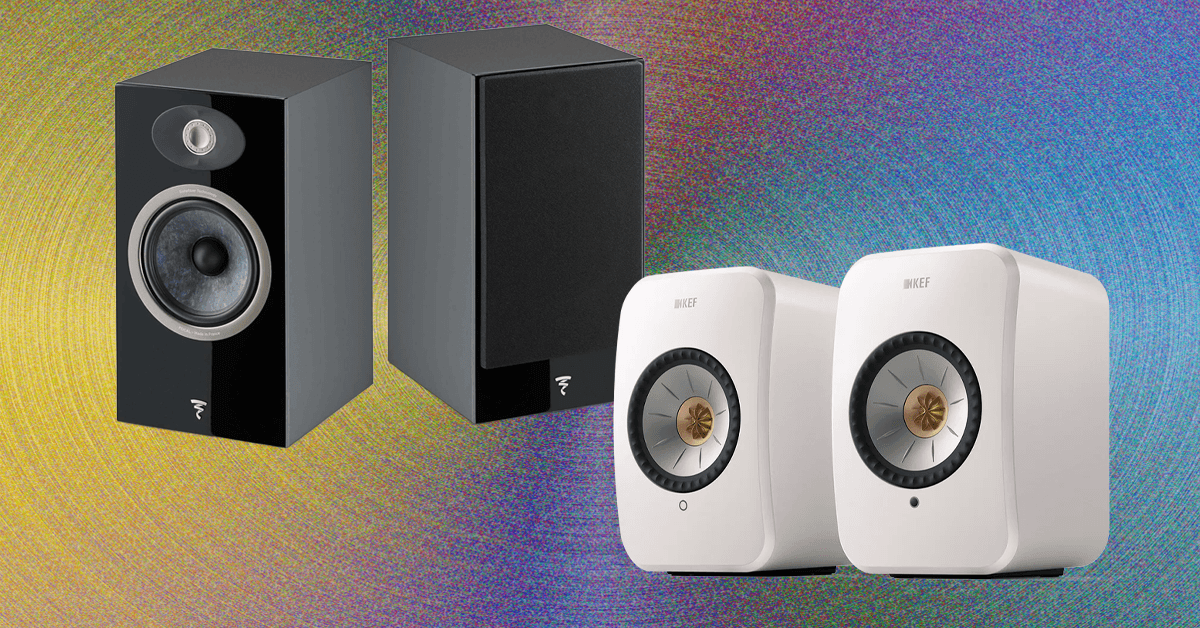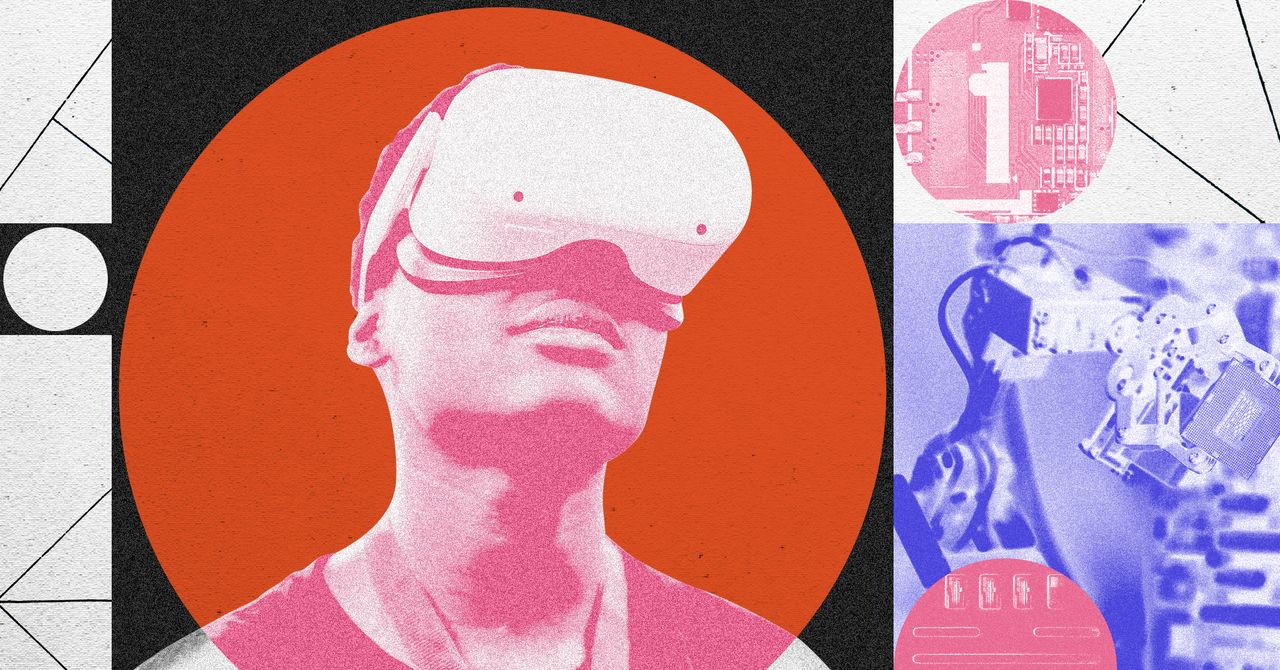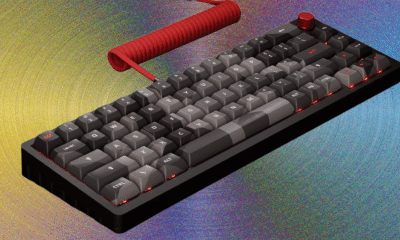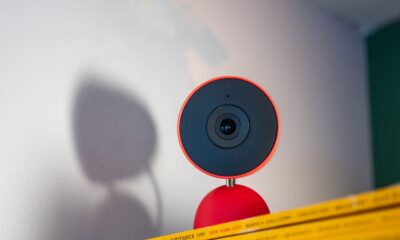Tech
Is your ultra-HD TV worth it? Scientists measure the resolution limit of the human eye

Is your ultra-high-definition television really worth it? Do you need a 4K or an 8K screen to get the best viewing experience at home?
According to researchers at the University of Cambridge and Meta Reality Labs, the human eye has a resolution limit: in other words, there are only so many pixels the eye can see. Above this limit, a screen is giving our eyes more information than they can detect.
To calculate the resolution limit, the researchers conducted a study that measured participants’ ability to detect specific features in color and grayscale images on a screen, whether looking at the images straight on or through their peripheral vision, and when the screen was close to them or further away.
The precise resolution limit depends on a number of variables, including the size of the screen, the darkness of the room, and the distance between the viewer and the screen. However, for an average-size UK living room, with 2.5 meters between the TV and the sofa, a 44-inch 4K or 8K TV would not provide any additional benefit over a lower resolution Quad HD (QHD) TV of the same size.
The researchers have also developed a free online calculator where users can enter the size of their room and the dimensions and resolution of their TV to determine the most suitable screen for their home.
Their results are reported in the journal Nature Communications.
Any consumer buying a new TV is bombarded with technical information from manufacturers, all trying to persuade them that the display resolution of their screens—whether Full HD, 4K or 8K—offers them the best viewing experience.
And display resolution is considered equally important for the many other screens we use, on our phones or computers, whether we’re using them to take pictures, watch films or play video games, including games in virtual or augmented reality. Even car manufacturers are offering higher and higher resolutions for in-car information displays and satnav screens.
“As large engineering efforts go towards improving the resolution of mobile, AR and VR displays, it’s important to know the maximum resolution at which further improvements bring no noticeable benefit,” said first author Dr. Maliha Ashraf from Cambridge’s Department of Computer Science and Technology.
“But there have been no studies that actually measure what it is that the human eye can see, and what the limitations of its perception are.”
“If you have more pixels in your display, it’s less efficient, it costs more and it requires more processing power to drive it,” said co-author Professor Rafał Mantiuk, also from Cambridge’s Department of Computer Science and Technology.
“So we wanted to know the point at which it makes no sense to further improve the resolution of the display.”
The researchers created an experimental set-up with a sliding display that allowed them to measure exactly what the human eye can see when looking at patterns on a screen. Instead of measuring the specifications of a particular screen, they measured pixels per degree (PPD): a measurement of how many individual pixels can fit into a one-degree slice of your field of vision.
Measuring PPD helps answer a more useful question than “how high is the resolution of this screen?” Instead, it answers the question “how does this screen look from where I’m sitting?”
The widely accepted 20/20 vision standard, based on the Snellen chart that will be familiar to anyone who has ever had their vision checked, suggests that the human eye can resolve detail at 60 pixels per degree.
“This measurement has been widely accepted, but no one had actually sat down and measured it for modern displays, rather than a wall chart of letters that was first developed in the 19th century,” said Ashraf.
Participants in the study looked at patterns with very fine gradations, in shades of gray and in color, and were asked whether they were able to see the lines in the image. The screen was moved towards and away from the viewer to measure PPD at different distances. PPD was also measured for central and peripheral vision.
The researchers discovered that the eye’s resolution limit is higher than previously believed, but that there are important differences in resolution limits between color and black-and-white. For grayscale images viewed straight on, the average was 94 PPD. For red and green patterns, the number was 89 PPD, and for yellow and violet, it was 53 PPD.
“Our brain doesn’t actually have the capacity to sense details in color very well, which is why we saw a big drop-off for color images, especially when viewed in peripheral vision,” said Mantiuk.
“Our eyes are essentially sensors that aren’t all that great, but our brain processes that data into what it thinks we should be seeing.”
The researchers modeled their results to calculate how the resolution limit varies across the population, which will help manufacturers make decisions that are relevant for the majority of the population: for example, designing a display which has retinal resolution for 95% of people rather than an average observer.
Based on this modeling, the researchers developed their online calculator, which enables people to test their own screens or help inform future buying decisions.
“Our results set the north star for display development, with implications for future imaging, rendering and video coding technologies,” said co-author Dr. Alex Chapiro from Meta Reality Labs.
More information:
Resolution limit of the eye: how many pixels can we see?, Nature Communications (2025). DOI: 10.1038/s41467-025-64679-2
Citation:
Is your ultra-HD TV worth it? Scientists measure the resolution limit of the human eye (2025, October 27)
retrieved 27 October 2025
from https://techxplore.com/news/2025-10-ultra-hd-tv-worth-scientists.html
This document is subject to copyright. Apart from any fair dealing for the purpose of private study or research, no
part may be reproduced without the written permission. The content is provided for information purposes only.
Tech
These Are The Best Bookshelf Speakers for Your Living Room or Desk

Other Good Speakers We Tested
We test a lot of speakers, and not all of them make it to the top list. Sound is subjective, so it’s worth looking at lots of models before diving in. Here are some more solid options.
Photograph: Ryan Waniata
Fluance Ri71: The Ri71 is a great-sounding and affordable pair of active speakers with some operational quirks. Their versatile input selection includes HDMI ARC to connect to your TV, but unlike every other such pair I’ve tested, your TV remote only controls volume, not power, and the speakers maintain independent volume levels. That means you don’t get the seamless TV experience that makes other ARC-enabled speakers and amplifiers great soundbar alternatives. Otherwise, their clear, warm, and balanced sound for everything from Bluetooth streams and vinyl to sitcoms and movies makes them worth considering at their $400 launch price.
Bowers and Wilkins 606 S3 Passive Speakers: These midrange audiophile speakers are gorgeously crafted and fantastically musical for their price. The only real quibble I raised in my review is that their upper midrange/treble is sometimes too sharp for my taste, especially with TV content. Otherwise, they’re a sweet ride that oozes quality.
Uturn Ethos Powered Speakers: Uturn’s Ethos speakers were tailored to pair with your Uturn turntable, and they made for a sweet match with my Orbit Theory reference model (9/10, WIRED Recommends). They’re beautifully made and offer a potent A/B amplifier to keep your vinyl in the analog realm that hums softly without getting in the way. The downside is their lack of inputs or features, including zero EQ, so you’d better love what you hear from the get-go.
Yamaha NS-600A Passive Speakers: Yamaha’s gloriously crafted NS-600A (8/10, WIRED Recommends) will reveal details, textures, and dare I say, emotions you never noticed in your favorite music and movies. Like the B&W 606 S3, their treble sometimes has too much bite for my taste. I’d be fine with that for half the price, but at $3K (or more) per pair, I want the perfect sonic match. If you like a keener cut to your favorite tunes, this pair could be yours.
Power up with unlimited access to WIRED. Get best-in-class reporting and exclusive subscriber content that’s too important to ignore. Subscribe Today.
Tech
Are Kids Still Looking for Careers in Tech?

Today’s high school students face an uncertain road ahead. AI is changing what skills are valued in the job market, and the Trump administration’s funding cuts have stalled scientific research across disciplines. Most professions seem unlikely to look the same in 10 years, let alone 50. Even students interested in STEM subjects are asking: What can my career look like, and how do I get there?
WIRED talked to five high school seniors from across the country about their interest in STEM—and how they’re making sense of the future.
These comments have been edited for length and clarity.
This Generation Needs to Be at the Forefront of AI Development
I’ve always had an interest in computer science, but my interest in AI started my junior year. The part that hooked me was how applicable it was to our daily lives. I was able to see the rise of ChatGPT and other LLMs, and how people were using them in my academic life. Some people would use it unethically on tests or assignments, but it could also be used to create practice problems. Being able to see how rapidly it’s evolving in front of me was the main reason I became interested. It’s affecting our academic life so much that it’s imperative that we’re at the forefront of how it’s being developed.
My school is a math and science academy, so I got to explore independent research related to LLMs. One of the main things I worked on was how LLMs can sometimes indirectly give out private data. Say you ask it to code something for you that requires an API key, which is sensitive information. Because it’s trained on a vast amount of data, it could have an API key in its data set, and it’ll give you code, possibly including the API key. My most accomplished research project was developing an algorithm to cut out those private pieces of data during its training, to allow it not to spew out these pieces of private data during use.
AI is such a new field that’s evolving, that if we’re able to set roots in it right now, we’d be able to see that outcome as we grow older. Understanding its security is very important to me, especially considering it’s being used almost blindly by everyone. What interests me is being at the forefront and making sure I can have some say in how my data is being used.
I’m applying to undergrad programs right now, and I’m also looking at some untraditional routes, where you go straight into an industry. Right now, in computer science, sometimes a degree is just a baseline, and if you have the skills, it’s not even necessary. So I’m looking into other options. —Laksh Patel, 17, Willowbrook, Illinois
Health Care Access Starts With Communities
My family, on both sides, has a long history of women developing neurodegenerative disease, mostly Alzheimer’s and Parkinson’s. So I spent my whole childhood playing doctor, treating my family matriarchs, tending to them and seeing how their diseases progressed. I became so interested in how these diseases worked, and how I could help patients like the ones in my family and my community who didn’t have access to medical resources because of their income.
I’ve really developed a love for patient care, for being able to help a person in such a debilitating time in their lives. As those female family members began to fade away and pass on, I realized how quickly these diseases spread and why they were so detrimental, especially without proper medicine. When I got into high school, I started to get oriented with research, so that I could gain a base level of understanding to bring to college to try to begin my career as early as possible and help more people.
Tech
What’s the difference between passwords and passkeys? It’s not just the protection they provide

Passwords are the keys to our digital lives—think how many times you log in to websites and other systems. But just like physical keys, they can be lost, duplicated and stolen.
Many alternatives have been proposed in recent years, including passkeys. These offer a significant improvement in terms of user friendliness and potential for widespread use.
But what exactly are they—and how do they differ from passwords?
Passwords are vulnerable
In simple terms, a password is a secret word or phrase that you use to prove who you are to computer systems and/or online. If you have an account on a website or subscribe to a service provider you likely have many.
Passwords themselves are fine; it is the way we implement and use them that makes them vulnerable. For example, weak password habits are everywhere. A CyberNews report from earlier this year identified 94% of 19 billion leaked passwords were re-used. It also identified several similarities in passwords, including strings of numbers such as “123456,” people’s names, cities, popular brands and swear words.
And when a breach occurs, stolen passwords can spread quickly. This leads to accounts being taken over, identity theft and/or phishing attacks. In one experiment, hackers were trying to use leaked credentials within an hour.
Passwords are also vulnerable to phishing, which is when scammers trick you into typing your password (or other information) into a fake account login page. Phishing emails continue to grow in number and consequence with one report indicating more than 3 billion phishing emails sent per day globally.
A good password is unique (that is, never re-used) and complex (imagine a sequence of letters, numbers and symbols such as “e8bh!kXVhccACAP$48yb”). It can also be a unique combination of multiple words to create a phrase or memorable sequence.
This could be difficult to remember, although creating a story that uses the contents of the password might help. For example, say your password was “CrocApplePurseBike.” You could remember it by thinking of the Crocodile that packed its Apple into a Purse before riding a Bike.
What are passkeys and how do they work?
Passkeys first started to emerge roughly four years ago. They use a mathematical process called public-key cryptography to create a unique set of information that is split into two parts—or keys.
One key is public and can be shared with websites; the other is a private key that is stored securely on your device. To sign into an account, the website sends a random challenge (such as a number) and your device uses the private key to “approve” the login request. This approval is usually called “signing” the request and applies a mathematical process to the challenge.
Your device won’t just do this automatically; you will typically be required to approve the request. For many mobile devices this will require your face or fingerprint to be used to authorize the response to be sent.
Finally, the website checks the signature via the public key it already has. If it confirms the challenge, you are in.
Stronger by design
Passkeys are stronger than passwords by design. It doesn’t matter if the public key is stolen, because it cannot be used on its own. Your private keys are safely protected by your device’s security, with most using face or finger-based biometrics to unlock (it is best to avoid relying on a PIN).
Each passkey is also unique for every service you use; even if the key for a site could be stolen, it cannot be used elsewhere.
Another plus is that passkeys are resistant to phishing. From a user perspective, there isn’t a password to send in response to a phishing email. A request to log in on a site has to come from the registered device combined with the approval of the user.
Passkeys are also more convenient than passwords. You don’t have to look for the password you used when you registered—the passkeys are already linked to your device and are only a finger/face verification away.
There are, however, some issues with passkeys. For one, while many browsers, operating systems and websites are embracing passkeys, this isn’t universal. And some early implementations suffered with compatibility between devices (such as between Microsoft and Apple devices).
As users move to newer devices and manufacturers improve integration, these issues should disappear.
A clear winner
From a security point of view, passkeys are the clear winner. They offer stronger protection, can resist phishing and are easier to use. But until passkeys are everywhere, passwords will still play a supporting role.
Implementing passkeys on a website requires effort from the company concerned. With a vast number of sites requiring users to create accounts, the process of migrating them all to passkeys is going to take decades. Many will never adopt the practice unless other factors force their hand.
For now, it’s crucial that we continue to focus on password hygiene by using strong, unique passwords and enabling multi-factor authentication wherever possible. If you do nothing else after reading this article, at least change any re-used passwords.
More information:
Paul Haskell-Dowland et al, What’s the difference between passwords and passkeys? It’s not just the protection they provide, (2025). DOI: 10.64628/aa.7mjgtmnk5
This article is republished from The Conversation under a Creative Commons license. Read the original article.![]()
Citation:
What’s the difference between passwords and passkeys? It’s not just the protection they provide (2025, October 26)
retrieved 26 October 2025
from https://techxplore.com/news/2025-10-difference-passwords-passkeys.html
This document is subject to copyright. Apart from any fair dealing for the purpose of private study or research, no
part may be reproduced without the written permission. The content is provided for information purposes only.
-

 Tech1 week ago
Tech1 week agoHow to Protect Yourself Against Getting Locked Out of Your Cloud Accounts
-

 Tech1 week ago
Tech1 week agoThe DeltaForce 65 Brings Das Keyboard Into the Modern Keyboard Era—for Better or Worse
-

 Business1 week ago
Business1 week agoGovernment vows to create 400,000 jobs in clean energy sector
-

 Tech1 week ago
Tech1 week agoI Tested Over 40 Heat Protectant Sprays to Find the Best of the Best
-

 Tech1 week ago
Tech1 week agoSome major Australian towns still have poor phone reception—it’s threatening public safety
-

 Business1 week ago
Business1 week agoDiwali 2025: Gold & silver likely to consolidate next week; Here’s what analysts said – The Times of India
-

 Tech1 week ago
Tech1 week agoGemini in Google Home Keeps Mistaking My Dog for a Cat
-

 Fashion1 week ago
Fashion1 week agoReal UK GDP grows 0.3% QoQ in quarter to Aug 2025: ONS


















